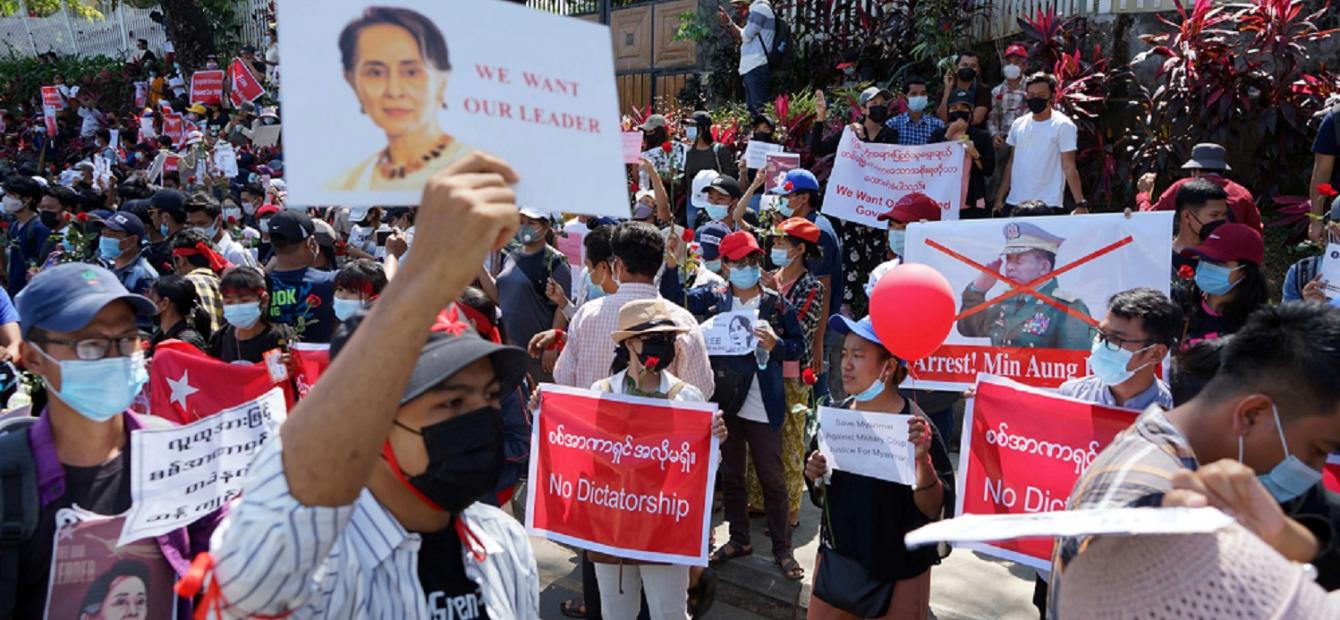
A closer look at 5 regional responses to the Myanmar coup
The February 1 coup in Myanmar has elicited a whole gamut of responses from the international community. Conflict researcher Marco Mezzera takes a close look at the responses of China, ASEAN, Japan, India and Russia – of which the latter's ties with the military regime are becoming closer than ever.
The coup d’état in Myanmar on 1 February this year has elicited a whole gamut of responses from the international community. They have ranged from the West’s compact condemnation to the careful cautionary advice of the Association of Southeast Asian Nation (ASEAN) to Russia’s quiet siding with the military regime. While the West – with the United States leading the way – has taken the familiar road of sanctions and isolation, other geopolitical actors have resorted to a mix of approaches.
The 2021 Myanmar Coup
Myanmar’s military, the Tatmadaw, has taken back the country’s rule on 1 February 2021. After it had controlled Myanmar since 1962, the rule ended with a so-called ‘democratic transition’ in 2010 after the release of Aung San Suu Kyi, the opposition leader who had been put under house-arrest by the military since 1989.
In 2015, Aung San Suu Kyi secured a landslide victory in the national parliament with her party National League for Democracy during the first free democratic elections in Myanmar in twenty-five years. The most recent elections, in 2020, resulted in another landslide victory for Aung San Suu Kyi.
However, the Tatmadaw declared these results as invalid and committed a coup on 1 February 2021. Aung San Suu Kyi was moved to an unknown location and mass civilian protests against the military regime ensued. The unarmed protestors have been faced with excessive violence by the military.
China: The deus ex machina?
In the immediate aftermath of the 2021 Myanmar Coup, when the West had spoken out words of condemnation, most of the international observers were debating the possible role of China. Was it China, among the regional players, which was bound to profit the most from the sudden anti-democratic turn in Myanmar?
A few of these observers timidly pointed to the non-linear relation that the two countries have had since the 1950s1 , and thus anticipated a certain reluctance by the Tatmadaw to jump into China’s suffocating embrace. However, the majority seemed to take this development as almost inevitable. The only question left unanswered regarded the modalities of such a renewed and strengthened alliance.
The events that have followed the coup have produced a much more blurred situation. Old imbalances in the China-Myanmar relationship and reciprocal causes of mistrust have kept the two countries at arm’s length, preventing the expected marriage of interests from actually taking place.
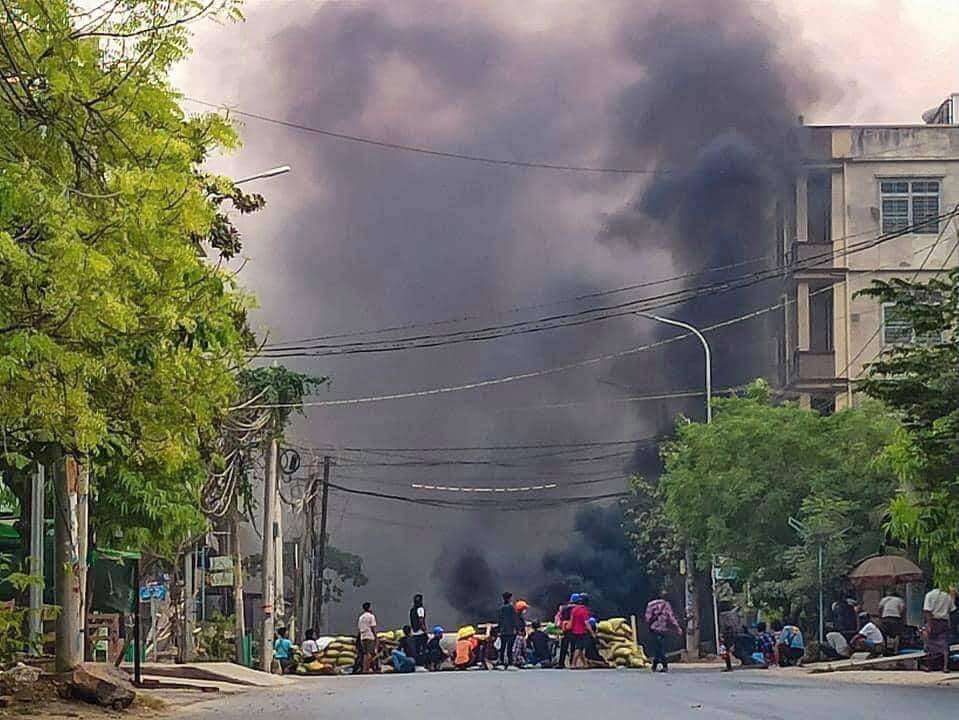
In its early reactions to the coup, China faithfully abided by its proclaimed principle of non-interference in other countries’ internal affairs. As a result, it has blocked – together with Russia – any attempt within the United Nations Security Council to publicly condemn the coup, let alone call for international intervention to restore the elected government and parliament.
Such advocacy at the global level must have pleased the Tatmadaw. But its leadership is also aware that some of the many layers that characterise the relationship with China may run counter to its inner interests.
Being aware of these tensions simmering under the surface, China has called on all parties to the current crisis to practice restraint and dialogue. It has warned the international community against “one-sided pressure and calling for sanctions or other coercive measures”2 , while promoting the rather ethereal tool of quiet diplomacy.
Conscious of its achieved ‘great power’ status, China has so far not openly facilitated any dialogue among the opposing parties in Myanmar. It must have realised that its sheer geopolitical weight would make it highly unsuitable for such a peace facilitating role – and, too controversial and suspicious for most of the key actors in Myanmar.
Eventually, as revealed by its ambassador to the UN, China has suggested that such a mandate should be rather bestowed on the ever-soul-searching ASEAN, which discussions about convening a special summit on the situation in Myanmar around the end of April China duly noted.
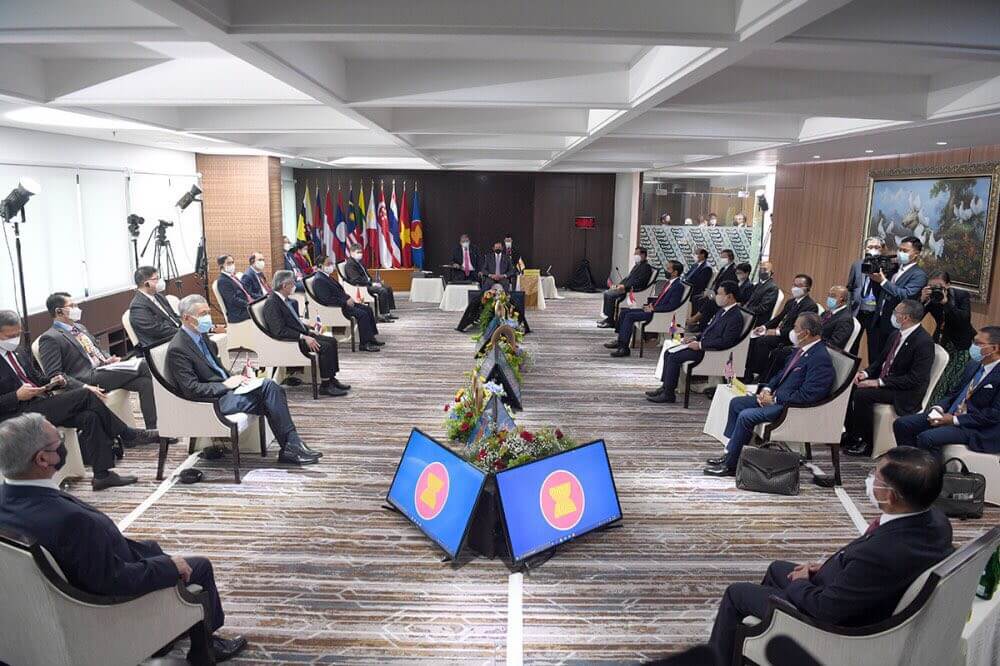
ASEAN: Waiting for Godot
Since Myanmar’s accession in 1997, ASEAN has often had to deal with, or tried to ignore as much as possible, the thorny issue of Myanmar and its abysmal human rights record. While the association has been evolving steadily throughout the last decades from a purely economic project into a more political one, it has often perceived the military-ruled Myanmar as a shackle preventing it from flourishing as intended.
Until 1 February this year, ASEAN stuck to the familiar tactic of blindly referring to the sacred principles of non-interference and respect for each member’s own sovereignty. This seemed a sufficient remedy to avoid facing controversial issues that would underline the structural weaknesses of the regional block, or worse, produce irreparable fissures within it.
The start of the so-called democratic transition in Myanmar in 20113 had previously strengthened the members’ own perception that ASEAN was finally on its way to achieve political maturity. If not through the spreading of fully functional democratic systems throughout the region, at least through a semblance of stable civilian regimes, with the military taking a backseat.
Indonesia has been the most vocal of the pack
However, first the 2014 military coup in Thailand and now the one in Myanmar have shaken the very foundations of this feeling of complacency. As soon as the military junta in Myanmar started using violence against unarmed anti-coup protestors, the leaders of those ASEAN members that were probably the most ambitious in terms of affirming the geostrategic centrality of the regional block, realised that they had to make a clear stand. Unfortunately, as often before, they had to advance in loose ranks, trying to forge extemporary alliances with like-minded members.
Indonesia has been the most vocal of the pack, through its Foreign Minister Retno Marsudi. Singapore, Malaysia and the Philippines have lent their support, joining in the call for “the release of political detainees including civilian leader Aung San Suu Kyi”, defining “the use of lethal force against unarmed civilians as inexcusable”4 , and professing their steadfast support to “Myanmar on its path to a fuller democracy”.5
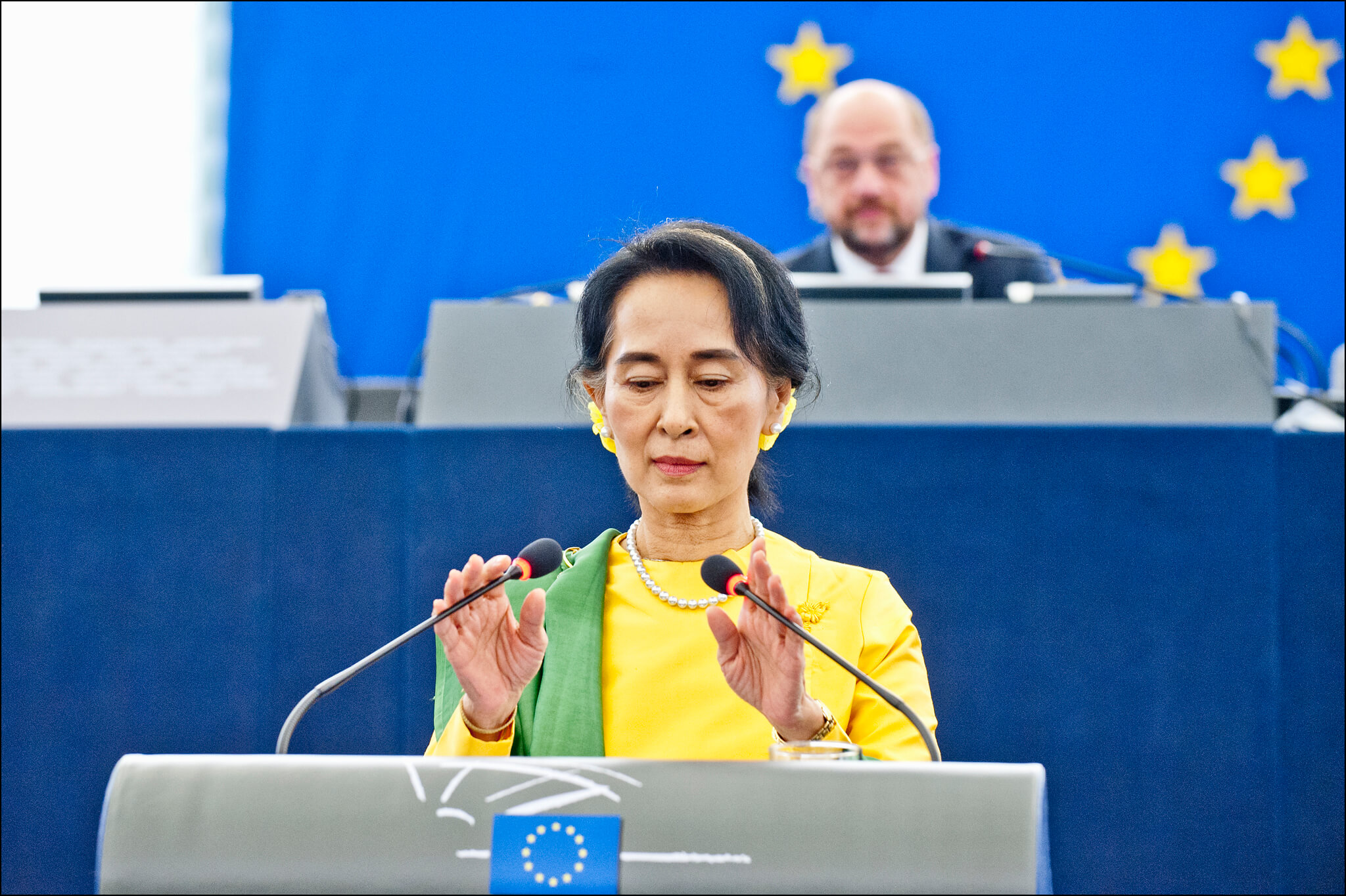
On 24 April, however, a dedicated ASEAN leaders’ summit took place in Jakarta. The meeting produced a list of carefully drafted recommendations to the military regime in Myanmar, and of possible initiatives that the block could undertake in support of de-escalation of the violence and return to an acceptable degree of stability.
The suggested initiatives included the provision of humanitarian assistance by ASEAN and the appointment of an ASEAN special envoy to help mediate in the crisis. However, General Min Aung Hlaing, who attended the meeting in representation of his country Myanmar (a move that raised much controversy back home), made clear that any such initiative could only be implemented after ‘stability’ would be restored in Myanmar.6
ASEAN’s painful search for unity and effective action, in the face of such a defining event for the block’s own future and legitimacy, risks destroying ASEAN’s carefully cultivated ambitions of geostrategic centrality.
Japan: Harvesting opportunities?
Amid the current confusion that characterises the international community’s response to the crisis in Myanmar, Japan seems well positioned to emerge as the appropriate link between a sanctions-driven Western approach and the approach of most regional players, which is a non-confrontational, albeit uncertain, way of dealing with the problem.
During Myanmar’s recent democratic transition, Japan has chosen to engage with the country
Like other Asian countries, and especially China, Japan has historically shied away from confronting Myanmar head-on in the name of a strict adherence to moralistic considerations. For instance, Japan took a neutral stand in the middle of the Rohingya crisis in 2017 and chose not to join the UN General Assembly in its condemnation of the Myanmar government.
Similarly, Japan chose to remain quiet when the Tatmadaw executed the coup on 1 February 2021. The only early concrete step that communicated a certain discomfort with the rapidly deteriorating political situation in Myanmar, was the decision by a private company named Kirin Brewery on 4 February, to end its partnership with Myanmar Economic Holdings – one of the two biggest military-controlled conglomerates in Myanmar.
During Myanmar’s recent democratic transition, however, Japan has chosen to engage with the country – and especially with the military – in a quiet but significant way. Mainly through the less conspicuous work of civil society organisations such as the Nippon Foundation, it has tried to help the Tatmadaw with its own ‘democratic transition’. This work has focused mainly on the democratisation of the armed forces and on persuading them to find their right role in a democratic system.
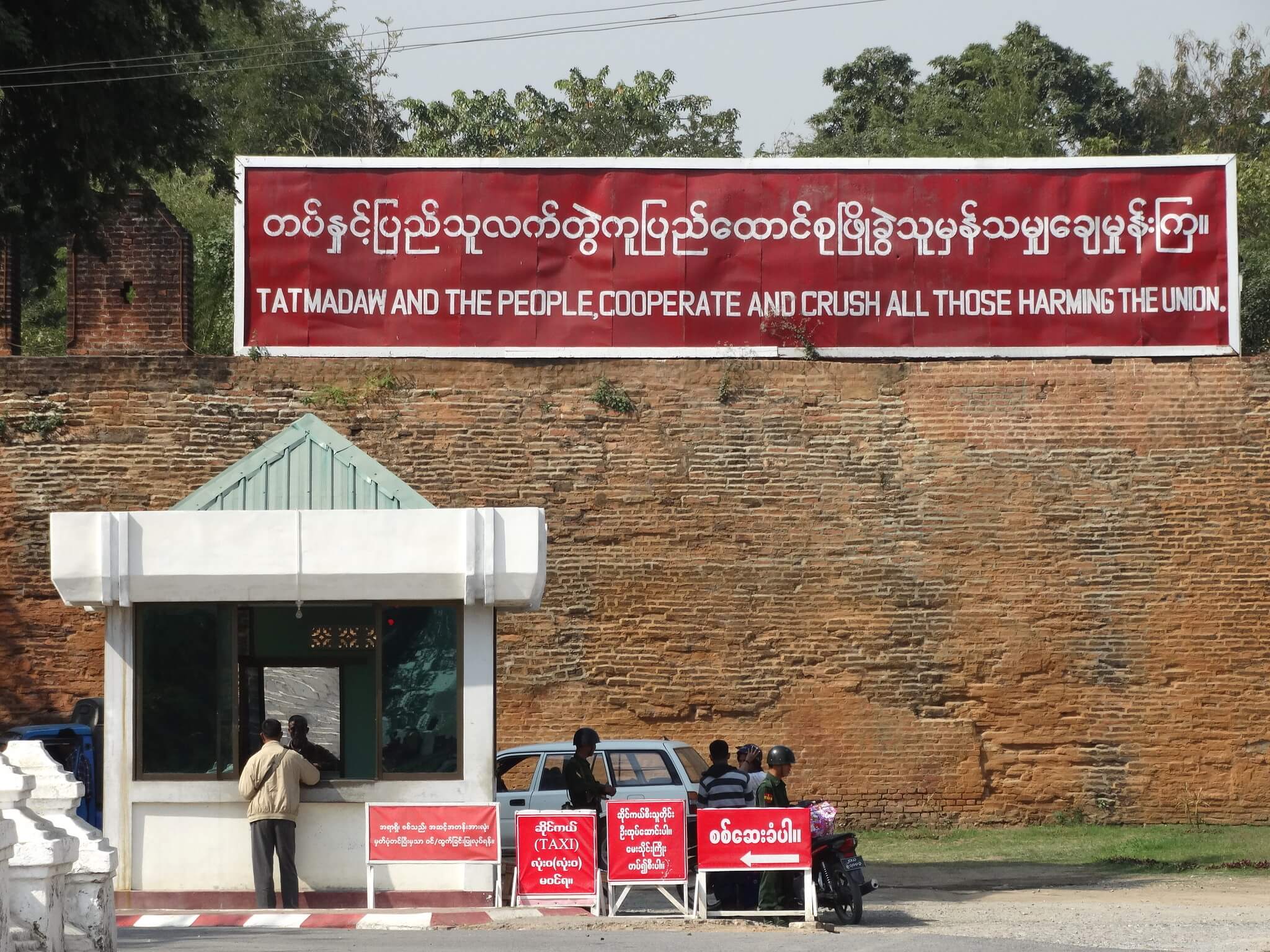
The Nippon Foundation has also invited some of the ethnic armed organisations’ (EAOs) leaders to Japan to meet with relevant political actors. This visit has been conceived as a kind of diplomatic exercise to put the EAOs’ representatives in touch with Japan’s political context and help them better understand Japan’s role in the Myanmar peace process.
In addition to this significant engagement in quiet diplomacy, it should not be forgotten that bilateral relations between Japan and Myanmar during the last decennia have also been characterised by considerable private investments. For instance, Japan’s “corporations – Marubeni, Mitsubishi, and Sumitomo – have actively developed energy and infrastructural projects” in Myanmar.7 In the 2017-2018 fiscal year, “Japan topped the list of foreign investors, accounting for more than 36% of the overall investment, followed by Singapore and Thailand”.8
India’s presence in Myanmar has significantly grown in recent year
To somehow preserve this hardly won position of advantage inside Myanmar, whilst at the same time trying to prevent the country from falling into the arms of China, Japan will surely try to continue applying its soft persuasive skills. Moreover, it will continue to utilise the deep and varied connections that it has developed with the military, political and economic elite of the country.
Finally, the recent revival of the Quadrilateral Security Dialogue, or Quad, could represent the ideal platform for Japan. Through this platform, Japan could try to keep open the reserved communication channels with the Tatmadaw and coordinate efforts to promote a political dialogue, in close coordination with the other three members of the alliance: the US, India and Australia.
India: Realpolitik prevails
India’s presence in Myanmar has also significantly grown in recent years through donations, infrastructural investments and arms transfers. In 2020, India was by far the biggest exporter of arms to Myanmar. In addition, India has been providing the armed forces of Myanmar with training in UN peacekeeping operations.
The 1,468 kilometres-long shared border, together with growing concerns about China’s expansionistic tendencies towards the Bay of Bengal, have induced India to become more active in the implementation of its ‘Act East’ policy.9 As a result, prior to the coup, India could have been regarded as one of the key strategic partners of the Tatmadaw, together with China and Russia.
In the aftermath of the coup and the violent repression that followed, while everybody was looking at Myanmar’s eastern borders with China and Thailand in expectation of growing refugee flows, news emerged of deserting police officers crossing into India. India suddenly appeared to be dragged right in the middle of all the controversies surrounding Myanmar’s political crisis.
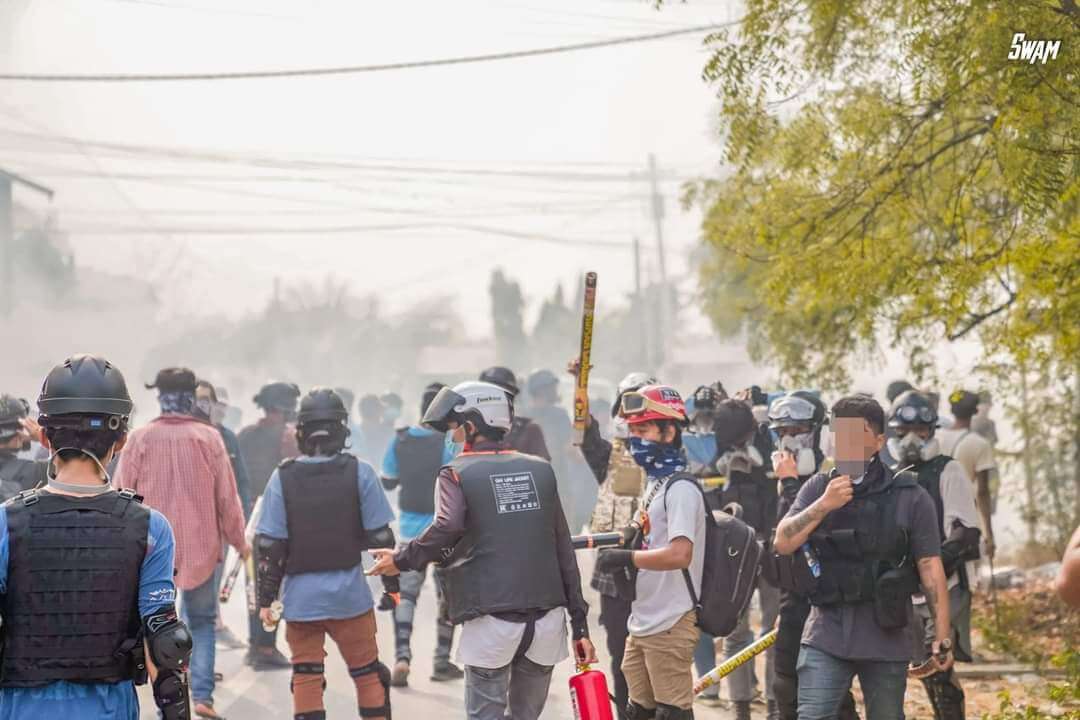
Pro-democracy sympathisers received the news with great expectation, hoping that this could be a first sign of a crumbling security apparatus. The underlying assumption was that India would welcome these deserters as legitimate political refugees and give them shelter.
Unfortunately, it soon became clear that this would not be the case. After local authorities in the north-eastern Indian state of Mizoram had initially issued instructions to facilitate the inflow of refugees from Myanmar, around mid-March New Delhi revoked those instructions.
Despite the strong ethnic linkages that straddle the border between the two countries, India’s central government ordered four north-eastern states not only to block the influx of refugees, but also to treat them as illegal immigrants. In other words, they needed to be identified and swiftly deported back to Myanmar.
Russia’s relation with the Tatmadaw has been growing steadily during the last few years
This decision betrayed India’s dismissal of basic humanitarian concerns in favour of more pragmatic considerations. Geostrategic ambitions centred around the ever-present competition with China, coupled with security arrangements with the Tatmadaw to support India’s fight against separatists operating in the north-eastern border areas10 , have apparently convinced India of the need not to antagonise the coup leaders in Nay Pyi Taw.
India’s presence in Myanmar may not be as conspicuous as China’s, but its recent decisions to second the military junta’s request to send back all those trying to flee the country will leave a permanent mark of disappointment with most of the people in Myanmar. India’s competition with China for strategic presence in Myanmar may lead it towards the same direction as its competitor: well-positioned with respect to the national power holders, but with serious popularity issues amongst the rest of the population of Myanmar.
Russia: All about clarity of intentions
Even though Russia is technically not part of the standard geographical maps delimiting the Indo-Pacific region, it is worth mentioning its current position vis-à-vis Myanmar. Namely, Russia’s response confirms its shrewd strategy of trying to occupy whatever space is left vacant by the West – and especially the US – in pursue of geostrategic relevance and of its economic interests.
Russia’s relation with the Tatmadaw has been growing steadily during the last few years. The core of this relation has been built around the sale of military equipment. In particular, Russia has taken a primary role in supplying surface-to-air missiles and aircrafts.
According to SIPRI11 , in the period between 2016 and 2020, Russia was the third biggest exporter of arms to Myanmar after China and India, accounting for 15 per cent of the country’s total imports of arms.12 It is further noteworthy that during the same period, the value of arms transfers between China and Myanmar consistently decreased.
The recent coup has suddenly created favourable conditions for a further strengthening of the relation, in light of the Western block’s loud retreat from its policy of supportive engagement to the so-called democratic transition in Myanmar.
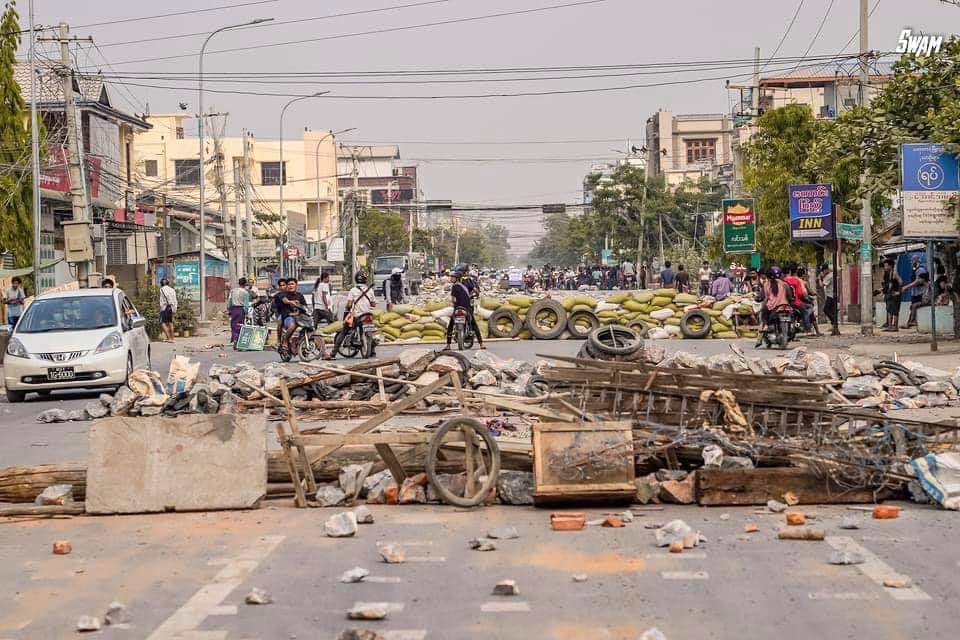
After the military takeover, Russia has been quick in cementing existing relations and presenting itself as a reliable partner for the Tatmadaw. The presence of its deputy defence minister at a parade on Armed Forces Day on 26 March, just a day before the deadliest crackdown so far against the anti-coup protestors, resounded widely in the international press.
Russia’s government representative was the highest foreign dignitary present. Even China had decided to limit its participation to its ambassador in Myanmar. The Russian deputy defence minister met with the country’s commander-in-chief, Min Aung Hlaing, and publicly announced his country’s intention to commit to “a strategy aimed at bolstering relations between the two countries”.13
At this point, Russia may as well emerge as the country capable of building the closest relationship with the military junta in Myanmar. Twenty years of military-technical cooperation, sealed by a formal military cooperation agreement signed in 2016, have produced strong bonds between the two countries.
The depth of this relationship is not only proven by the level of arms transfers, but also by the thousands of Myanmar military officers that have been trained in advanced science and engineering degrees in Russia.14 In conclusion, Russia appears all along as the Tatmadaw’s preferred choice for a strategic partner to offset China’s cumbersome influence on the country.
- 1Myanmar-China diplomatic relations started in 1950.
- 2Permanent Mission of the People's Republic of China to the UN, ‘Ambassador Zhang Jun Elaborated China's Position on the Situation in Myanmar in the Security Council’, 31 March 2021.
- 3In March of that year Thein Sein was sworn in as president of a new, nominally civilian government.
- 4Tom Allard, ‘No breakthrough on Myanmar crisis at Southeast Asian summit’, Reuters, 2 March 2021.
- 5Republic of the Philippines, Department of Foreign Affairs, ‘Statement: On the Violence on Myanmar’s Armed Forces Day’, 30 March 2021.
- 6‘Myanmar unity government tells ASEAN no talks until prisoners freed’, Arab News, 28 April 2021.
- 7Aleksandra Babovic and Arbenita Sopaj, ‘Japan’s approach to Myanmar: diplomatic leadership or business as usual?’, Foreign Policy in Focus, 5 April 2021.
- 8Mizzima, ‘Japan tops list of foreign investors in Myanmar SEZs’, The Bangkok Post, 10 October 2019.
- 9This is a recent reformulation, under the Modi government, of the ‘Look East’ policy that emerged at the beginning of the 1990s. The new label represents a further commitment by India to implement its strategic reorientation towards East Asia. At the core of this policy there is a more active engagement with ASEAN, with the objective of counterbalancing China’s growing influence in the region.
- 10And often setting up bases in Myanmar’s jungles.
- 11The Stockholm International Peace Research Institute.
- 12Pieter D. Wezeman, Alexandra Kuimova and Siemon T. Wezeman, ‘Trends in International Arms Transfers, 2020’, SIPRI Fact Sheet, March 2021.
- 13Henry Foy and Eli Meixler, ‘Russia seeks deeper ties with Myanmar military junta’, Financial Times, 26 March 2021.
- 14Marwaan Macan-Markar, ‘Myanmar embraces Russian arms to offset China's influence’, Nikkei Asia, 9 February 2021.





0 Reacties
Reactie toevoegen